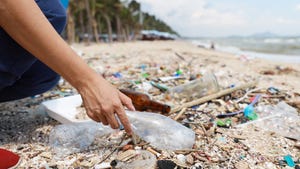The materials, which make up about 96% of commercial fluoropolymers available globally, should be classified as polymers of low concern, according to ACC.
June 16, 2022

A new study gives 14 fluoropolymers and fluoroelastomers a clean bill of health as polymers of low concern (PLC) — materials posing insignificant threat to human health or the environment.
The study, conducted by the American Chemistry Council’s Performance Fluoropolymer Partnership (PFP) and published June 14, advances research that identified four fluoropolymers as PLCs in 2018. The PFP’s research focused on the diverse chemistries of these materials — concluding they should not be regulated “as one monolithic unit,” the ACC said.
These 18 materials make up about 96% of commercial fluoropolymers available globally. They are among the essential ingredients in cutting-edge electronics, medical devices, transportation, telecommunications, and many more critical applications.
“The manuscript states that the environmental and health profiles for fluoropolymers are significantly unique among the majority of PFAS (per- and polyfluoroalkyl substance) chemistries, which illustrates that all PFAS are not the same,” according to the ACC. “Therefore, attempts to group or regulate the wide universe of PFAS as one class of chemistries are neither scientifically appropriate nor accurate.”
Researchers used 13 criteria — including low molecular weight leachables, reactive functional groups, and electrical charge — to assess these 14 fluoropolymers at their in-use phase. “This manuscript focuses on the ‘middle cut’ of the fluoropolymer lifecycle and as such, is an important contribution to our understanding of the safety profiles of these chemistries,” the ACC said.
The fluoropolymers and fluoroelastomers assessed in the study are:
Polyvinylidene fluoride (PVDF) homopolymer;
PVDF copolymer;
ethylene-chlorotrifluoroethylene (ECTFE) copolymer;
ECTFE terpolymer;
polychlorotrifluoroethylene (PCTFE);
fluoroethylene-vinyl ether copolymer (FEVE);
terpolymer of ethylene, tetrafluoroethylene, and hexafluoropropylene (EFEP);
terpolymer of chlorotrifluoroethylene, tetrafluoroethene, and perfluoroalkyl-vinyl-ether (CPT);
terpolymer of tetrafluoroethylene, hexafluoropropylene, and vinylidene fluoride (THV), as well as specialty fluoroplastics amorphous fluoropolymers and fluorinated ionomers;
tetrafluoroethylene-propylene co-polymer (FEPM);
hexafluoropropene-vinylidene fluoride co- and terpolymers (FKM);
tetrafluoroethylene-perfluoromethyl vinyl ether perfluoroelastomer (FFKM).
The paper, “A Critical Review of the Application of Polymer of Low Concern Regulatory Criteria to Fluoropolymers II: Fluoroplastics and Fluoroelastomers” was published in the journal Integrated Environmental Assessment and Management.
About the Author(s)
You May Also Like


